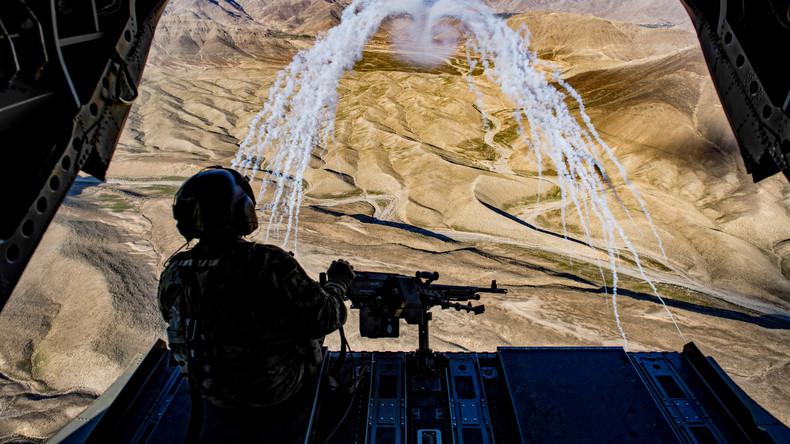What US Generals Get Wrong About Afghanistan
| Publisher | Human Rights Watch |
| Publication Date | 12 April 2018 |
| Cite as | Human Rights Watch, What US Generals Get Wrong About Afghanistan, 12 April 2018, available at: https://www.refworld.org/docid/5b39f2a54.html [accessed 5 June 2023] |
| Disclaimer | This is not a UNHCR publication. UNHCR is not responsible for, nor does it necessarily endorse, its content. Any views expressed are solely those of the author or publisher and do not necessarily reflect those of UNHCR, the United Nations or its Member States. |
April 12, 2018 11:00AM EDT
Published in Reuters
Patricia Gossman, Senior Researcher, Afghanistan
 A US army crew chief flying onboard a Chinook helicopter observes a test of flares during a training flight in Afghanistan, March 14, 2018. © 2018 Tech. Sgt. Gregory Brook/US Air Force via Reuters
A US army crew chief flying onboard a Chinook helicopter observes a test of flares during a training flight in Afghanistan, March 14, 2018. © 2018 Tech. Sgt. Gregory Brook/US Air Force via Reuters
United States Army General John Nicholson is repeating the dangerous mistakes of the past. In a recent interview he echoed the mantra of his predecessors, that the new US military strategy – which includes increasing both air power and the number of American troops training Afghan forces – has fundamentally changed the situation in Afghanistan. Nicholson, commander of US forces in Afghanistan and head of NATO's Resolute Support Mission since March 2016, should know better by now.
In 2014, Nicholson's predecessor, General John Campbell, said that he, too, had "seen the change." General Joseph F. Dunford referenced "the inevitability of our success" in 2013. His predecessor, General John Allen, declared, "We are winning. We are winning." In 2011, General David Petraeus said that US forces had "reversed the momentum of the Taliban." General Stanley A. McChrystal, in 2010, thought that "success is still achievable," while General David McKiernan, in 2009, observed that the United States was not "losing in Afghanistan." And on it has gone since US-led forces ousted the Taliban from power in 2001.
US military commanders might have a better sense of what's really going on if they spent more time visiting civilian medical facilities like Nangarhar Regional Hospital, as I did last December. I interviewed recent air and drone strike victims, like the 15-year-old boy who had to have both feet amputated after an Afghan army helicopter gunship strafed his family's car while they were on their way to a funeral, killing his aunt and injuring three others.
To read the full commentary >>
Link to original story on HRW website

